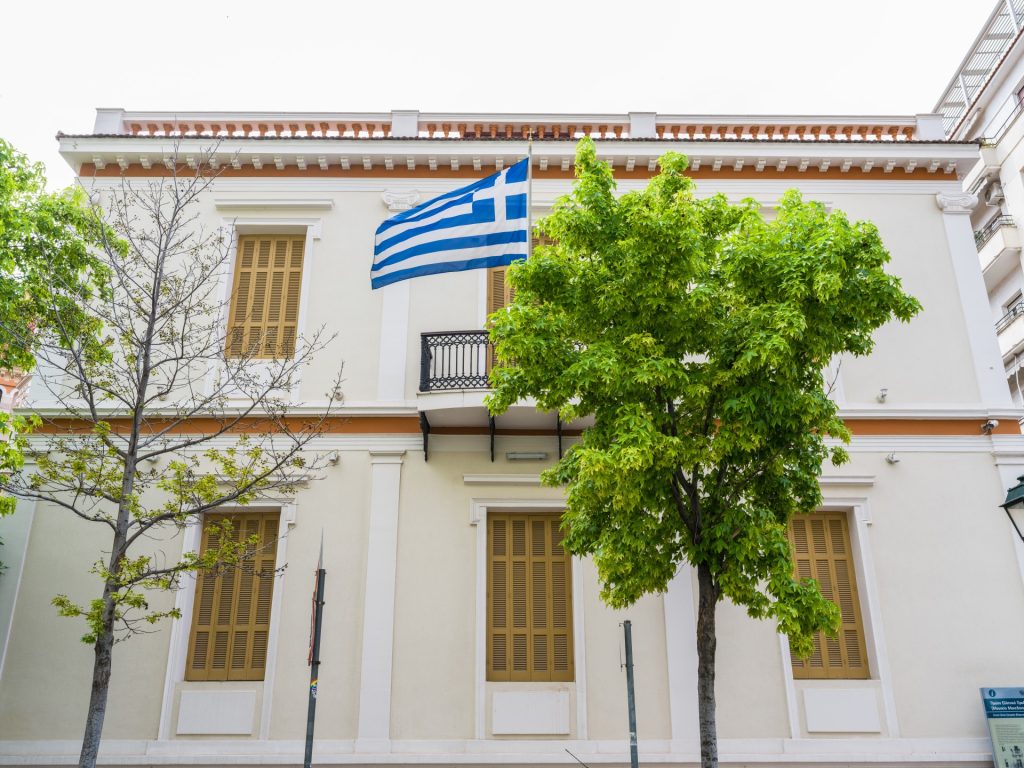The Museum

Establishment of a Macedonian Museum
The idea
The idea for the establishment of a Museum presenting the history of Macedonia already existed from the period between the two World Wars. In April 1917, the Provisional Government of Prime Minister Eleftherios Venizelos enacted the Decree 2134 for the establishment of a “Macedonian Museum”. This Museum was to bring together all the archaeological finds marking the various historical and artistic periods of Macedonia, from antiquity to the end of the Ottoman era. The efforts to establish the Museum continued into the 1940s by the Macedonian Educational Brotherhood; after the 1950s, a group of private individuals, descendants of famous Macedonian fighters (Makedonomachoi), undertook this initiative In December 1965, the Prime Minister of Greece, Stefanos Stefanopoulos, signed a decree for the founding of the Museum of the Macedonian Struggle, housed at the building of the former Consulate General of Greece in Thessaloniki. However, after the great earthquake of Thessaloniki in 1978, the building was deemed unfit and demolished.
The Friends of the Museum of the Macedonian Struggle
A year later, in 1979, the Association “Friends of the Museum of the Macedonian Struggle” was founded, which requested the reopening of the building to the public as a museum. The building was restored by the Faculty of Engineering of the Aristotle University of Thessaloniki. The School Building Organization conceded the building to the Association, in order to house the Museum of the Macedonian Struggle. On 27 October 1982, the Museum of the Macedonian Struggle was inaugurated by Konstantinos Karamanlis, President of the Hellenic Republic at that time. Ziller’s building is a representative example of Neoclassicism. Today, it is one of the few surviving Neoclassical buildings in Thessaloniki. This legendary building on Proxenou Koromila Street stands out in the city centre, a witness to a vibrant past and a creative future. Many pages of our national journey were written there, as were many smaller personal stories. Today, we continue to keep its history alive, enriching it with modern museum activities that will leave a resounding cultural imprint in time.
Timeline
1881
The first building on the site of today’s Museum was constructed, intended to serve as a Greek Consulate.
1890
The fire on the 22nd of August burnt the building to the ground.
1893
The construction of the new building, designed by the renowned German architect Ernst Ziller, was completed.
1894-1912
It housed the Consulate General of Greece in Thessaloniki, the first General Consul being Georgios Dokos.
1904-1908
The Consulate General of Greece in Thessaloniki became the informal headquarters for the Macedonian Struggle. The General Consul of Greece Lambros Koromilas was in charge, who organized secret services for the Macedonian Struggle within the consulates, the so-called “Centres”.
1912-1913
Macedonia was liberated and became a part of Greece. The consulate was dissolved and the building became property of the state.
1915-1978
The building housed the Agricultural Bank of Macedonia, the National Bank of Greece, the 21st Elementary School, the soup kitchen of the Red Cross (during the German occupation), a Girl’s School, a Night School and the 43rd Elementary School.
1978
After the disastrous earthquake in Thessalonki, the building was renovated and conceded to the Association of the “Friends of the Museum of the Macedonian Struggle”, in order to house the Museum with the same name.
1982
The Museum of the Macedonian Struggle was inaugurated by the President of the Hellenic Republic, Konstantinos Karamanlis. At the same time, the Research Centre for the Macedonian Struggle (ΚΕΜΑ) was founded.
1985
The Greek Guiding Association conducted the first educational programmes.
1989
The exhibition halls were designed by the famous set designer, George Anemogiannis.
1999
In 1999, the Association “Friends of the Museum for the Macedonian Struggle” founded the charitable Foundation for the Museum of the Macedonian Struggle. KEMA was renamed to Research Centre of Macedonian History and Documentation (KEMIT).
2008
In 2005, the Museum became part of the “Culture” Operational Programme. The subject matter of the Museum was expanded and the history of the Macedonian Struggle is presented in a more modern way, using new media.
2020
In December 2020, the change of the name of the “Foundation for the Museum of the Macedonian Struggle” to “Foundation for the Museum of the Macedonian Struggle and the Modern History of Macedonia” was approved.

